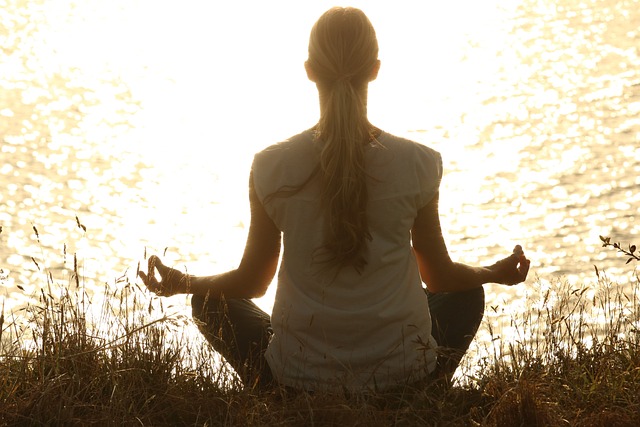
National challenges exist in providing protection services for the aged. A survey of the state Adult Protective Services programs was conducted by the National Committee for the Prevention of Elder Abuse on behalf of the National Center on Elder Abuse. The results showed a dramatic rise in elder abuse reported in 2001. The numbers only represent a small fraction of all the reports that needed to be analyzed. However, the study suggests that it's difficult to draw exact conclusions from the limited data.
Adult Protective Services or APS are public response programmes that respond to complaints of abuse of vulnerable adult. These programs are run by social workers and are located in human service organizations. Their activities include conducting investigations, developing case plans, counseling clients, and monitoring service delivery. These activities help vulnerable adults live independently. Service delivery can be complicated. It must balance the need to provide comprehensive services with a commitment to protect vulnerable adults' rights to self-determination.

APS targets and definitions vary from one state to the next. There is no standard. It has resulted in a wide variety of state- and local APS programs. However, most states have followed a common model of protective service delivery. This means that there is a similar level of knowledge about the extent of vulnerable adult abuse, but there is a lack of national leadership. This creates a complex network of local programs with different identities, delivery strategies, and service standards.
Researchers, practitioners, activists, and advocates have all found it difficult to gather accurate data regarding the number and nature cases being served through local APS programs. This is due to two main reasons: (1) lack of a mandatory reporting system from the state; (2) lack of uniform definitions. Accordingly, the number and severity of elder abuse reported to APS has increased dramatically over the past ten year, exceeding the growth in elderly population.
APS workers argue that excluding elder abuse from the definition of abuse would reduce the resources available for service delivery and marginalize self-neglecting adults. However, research has shown that a majority of the cases served by APS are self-neglecting adults. A complex criminal investigation can also be initiated if self-neglect becomes a problem.
The National Committee for the Prevention of Elder Abuse has surveyed 472,813 reports of vulnerable adult abuse. The study identifies core areas of mistreatment, which include physical abuse, neglect, emotional abuse, and property exploitation. Despite the fact that elder abuse cases have increased in number over the past decade, many other incidents go unreported. There are a limited number of studies that assess the effectiveness APS.

The National Association of Adult Protective Services Administrators(NAAPSA) supports the mission of improving services for vulnerable adults. The organization's state and local APS Administrator members provide a national presence. The National Academy on an Aging Society published the organization's magazine. This society aims for a better understanding of aging and guidance for people caring for older adults.
FAQ
What is the difference among a virus or bacterium and what are their differences?
A virus is a microscopic organism which cannot reproduce outside of its host cell. A bacterium can be described as a single-celled organism which reproduces by splitting in two. Viruses measure only 20 nanometers in diameter, but bacteria is up to 1 millimeter in size.
Viruses are spread via contact with infected bodily liquids such as urine, saliva, semen and vaginal secretions. Bacteria are usually spread through direct contact with contaminated objects or surfaces.
Viral infections can be transmitted through skin cuts, scrapes and bites. They may also enter through the nose, mouth, eyes, ears, vagina, rectum , or anus.
Bacteria may enter our bodies through cuts and scrapes on our skin, burns, insect bites, and other wounds. They may also come into our bodies through food, water, air, soil, dust, or animals.
Both viruses and bacteria can cause illness. Viruses can not multiply in the host. They only infect living tissues when they cause illness.
Bacteria can multiply within their hosts and cause illness. They can infiltrate other parts of the body. Antibiotics are needed to eliminate them.
Get immune enhancement with herbs and supplements
You can boost your immune function with herbs and natural remedies. Ginger, garlic, ginger, oregano oils, echinacea and ginkgo biloba are some of the most common.
However, these herbal remedies should not replace conventional medical treatment. They could cause side effects like nausea, dizziness or stomach cramps, dizziness as well as allergic reactions.
Is cold a sign of a weak immune response?
Cold can make you less immune to infection because your body makes fewer white blood cells, which are essential for fighting infections. However, being cold also makes you feel better because your body releases endorphins into your brain which reduce pain.
What does it take to make an antibiotic work?
Antibiotics kill harmful bacteria. The treatment of bacterial infections is done with antibiotics. There are many types of antibiotics. Some are administered topically, while others are given orally.
For people who have been exposed, antibiotics are often prescribed. To prevent shingles, an oral antibiotic may be prescribed to someone who has had chicken pox. For those with strep-thorphritis, an injection of penicillin could be given to prevent them from getting pneumonia.
Children should not be given antibiotics without the consent of a doctor. The possibility of side effects that can cause serious side effects in children is greater than for adults.
Diarrhea is one of the most common side effects of antibiotics. Other side effects that could occur include nausea, vomiting and dizziness. These side effects are usually gone once the treatment has finished.
Statistics
- According to the 2020 Dietary Guidelines for Americans, a balanced diet high in fruits and vegetables, lean protein, low-fat dairy and whole grains is needed for optimal energy. (mayoclinichealthsystem.org)
- WHO recommends reducing saturated fats to less than 10% of total energy intake; reducing trans-fats to less than 1% of total energy intake; and replacing both saturated fats and trans-fats to unsaturated fats. (who.int)
- WHO recommends consuming less than 5% of total energy intake for additional health benefits. (who.int)
- nutrients.[17]X Research sourceWhole grains to try include: 100% whole wheat pasta and bread, brown rice, whole grain oats, farro, millet, quinoa, and barley. (wikihow.com)
External Links
How To
How to Keep Your Body Healthful
The main goal of this project was to make some suggestions on how to keep your body healthy. Understanding what you need to do to keep your health in good shape is the first step to maintaining your health. This meant that we had to determine what was best for our bodies. After looking at the various methods people use to improve their health, it became clear that there were many ways that we could benefit. Finally, we came up with some tips that would help us stay healthier and happier.
We started by looking at what food we eat. Some foods are unhealthy and others are healthy. For example, we know that sugar is very unhealthy because it causes weight gain. But fruits and vegetables, on other hand, are good for us since they contain essential vitamins and minerals.
Next, we discussed exercise. Exercise strengthens our bodies and gives us more energy. It also makes us feel happy. There are many activities that you can do. Running, swimming, dancing, lifting weights, and playing sports are some examples. Yoga is another great way to build strength. Yoga is an excellent exercise because it improves flexibility and breathing. Avoid junk food and drink lots water if you want to lose weight.
We ended our discussion with a mention of sleep. Sleep is one of the most important things that we do every day. Lack of sleep can lead to fatigue and stress. This can lead to headaches, back pain and other health problems, such as depression, heart disease, diabetes, heart disease, and obesity. If we want to be healthy, we need to get enough sleep.